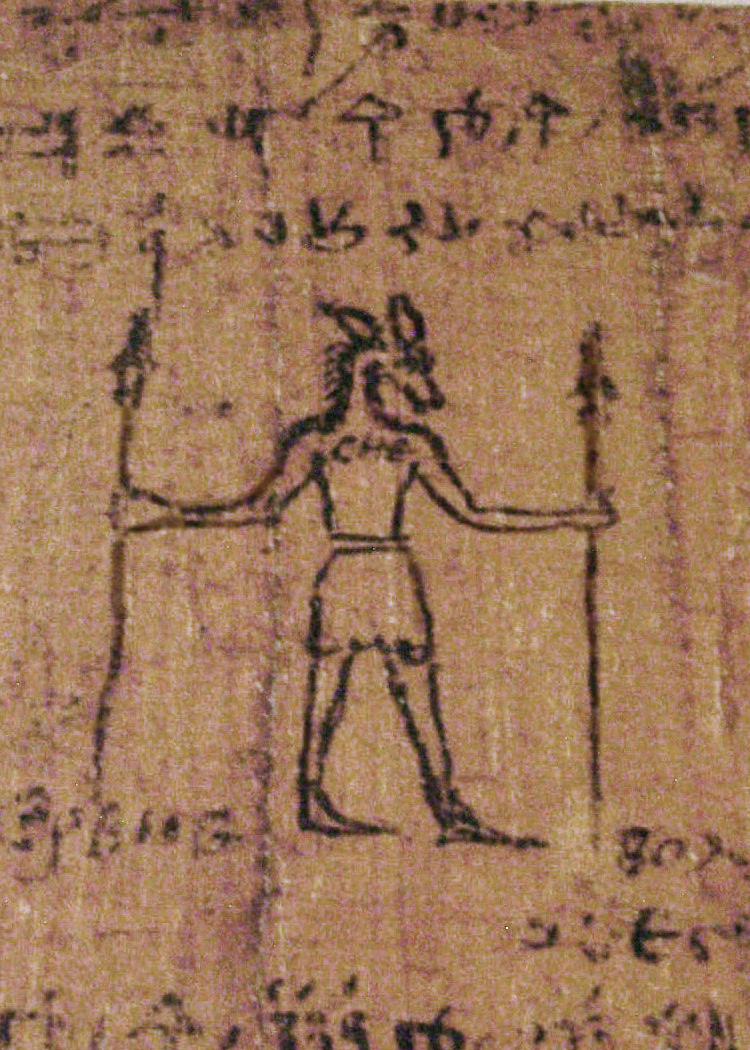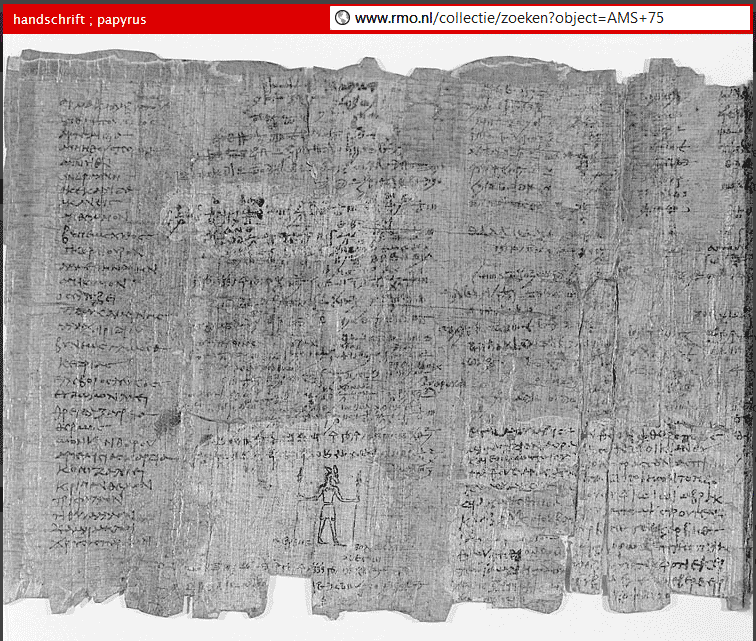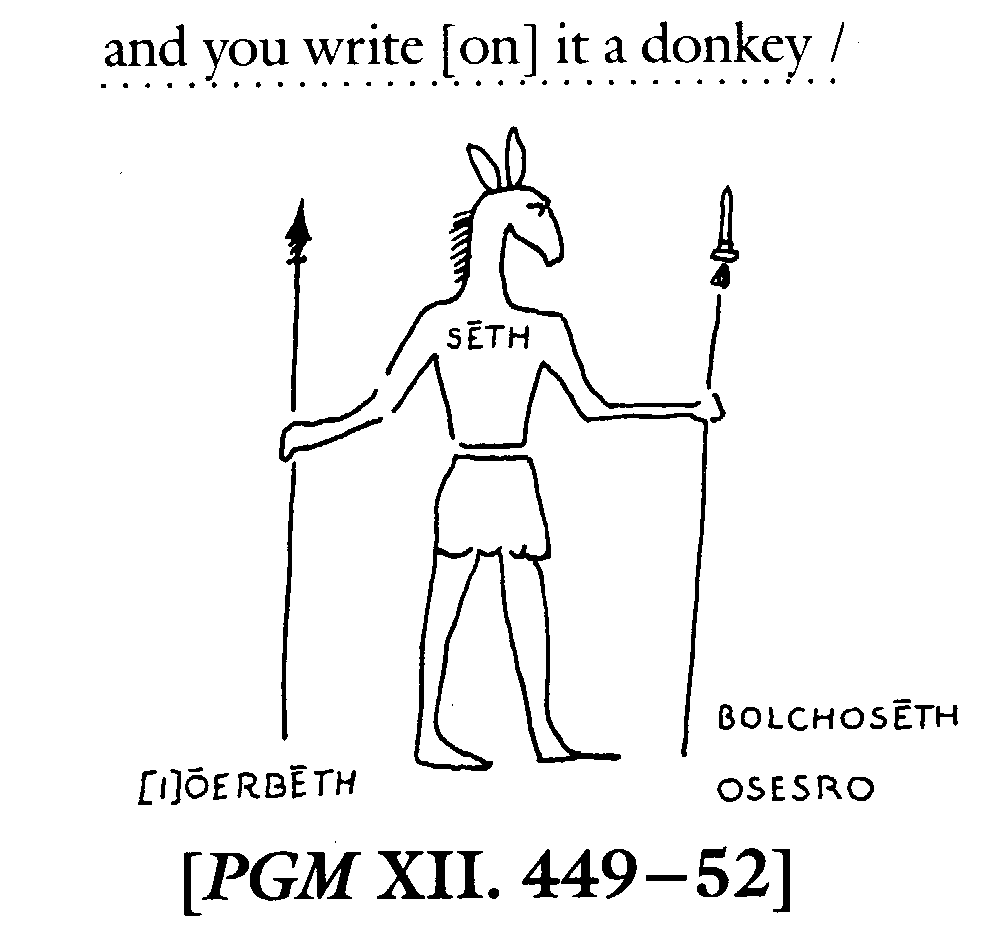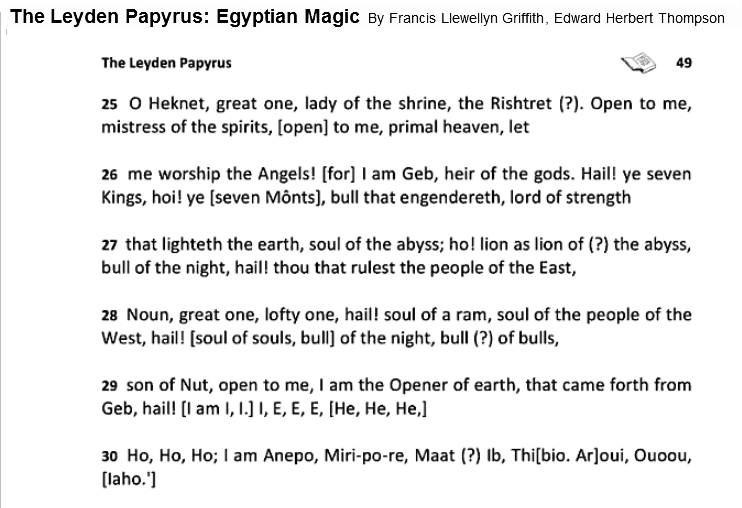 Greco-Roman Period, Roman, 4th century (CE 300 / 350) 27 x 52 cm (10 5 / 8 x 20 1 / 2 in.) Leiden Museum, AMS 75 Set detail: (translated from Dutch by Google) "Figure with human body and Seth-animal head. His arms are stretched to the left and right and keeping big man standards. On his chest is "Seth" in Coptic letters, he wears a short skirt." "Figuur met menselijke lijf en Seth-dier hoofd. Zijn armen zijn naar links en rechts uitgestrekt en houden mansgrote standaarden. Op zijn borst staat "Seth" in Koptische letters, hij draagt een korte schort." Larger view underneath - Photos © Monique van der Veen |

Museum photo which places the Set figure in context
|
_The Leyden papyrus: an Egyptian Magical Book_, by Francis Llewellyn Griffith, F.
Griffith, Herbert Thompson, page 13: "The use of hieratic might be thought to indicate some antiquity where it occurs. But the writing is a strange jumble; the hieratic is inextricably through sparingly mixed with the demotic, a single word being often written partly in hieratic, partly in demotic, a single word being often written partly in hieratic, partly in demotic. Where hieratic signs occur the language is not generally more archaic than when the demotic is pure." I found a drawing of this donkey-headed Set in The Greek Magical Papyri in Translation edited by Hans Dieter Betz, along with a translation of the spell: 
An interesting passage from the Leiden Papyrus: |



